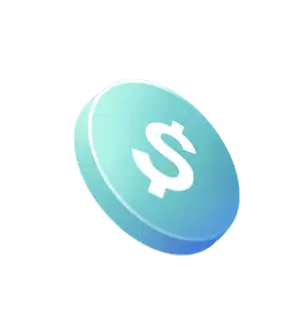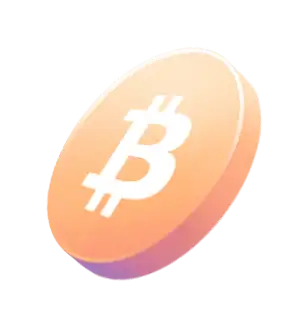Personal Finance
•
6 mins read
•
September 21, 2020
High Yield Checking Accounts Explained | Why You Need One Today
The merits of owning a high yield checking account to accelerate your savings

The best account for your cash is one you’ve probably never heard of: the high yield checking account, also called an interest bearing checking account. Traditional banks aren’t too excited about offering them because it means more money for you, with very few strings attached.
Checking accounts have always meant one thing — housing money for a little bit before we send it off to pay bills and buy groceries, save for our goals, or invest in the stock market. We’ve definitely been conditioned to think of our checking accounts as little clearinghouses for our money, and while that’s certainly true, why do we also think that there’s no way to earn interest on the money that’s parked? The median monthly checking account balance in the
. Imagine if you could earn interest from that money! Thanks to high yield checking accounts, you can (and should).
What Is a High Yield Checking Account?
A high yield checking account is a cash account that pays interest — like a savings account that’s meant for everyday spending. A relative newcomer to the finance world, high yield checking accounts put your money to work while it’s parked because you earn and spend from the same account.
Traditional banks like to have you manage your money and your goals through separate accounts, all with their own risks and rules. There are only so many withdrawals allowed per month, the fees can be confusing, and the accounts earn a pittance in interest. A high yield checking account combines all of the earnings of a high yield savings account with the access benefits of a checking account.
Why You Need an Interest Bearing Checking Account
Without a high yield checking accounts, you’re essentially leaving money on the table! That money could be put to better use, which is important because we are generally not savers.
famously showed that if faced with a $400 emergency more than 40% of Americans couldn’t cover the costs and would have to rely on friends or credit. There is no shame in having a weak saving game, but we do need to step it up.
A solid financial plan starts with a strong foundation; your cash accounts are that foundation. Saving,
, and
are all essential skills that can only make your life better.
Managing a High Interest Checking Account
A high yield checking account has all the features expected from a traditional checking account: unlimited checks, a debit card, online account management, and overdraft protection. At traditional banks, those high yield interest rates are sometimes capped, meaning that the higher interest rate is paid only up to a specific amount of money on deposit. So if the cap is $10,000, that means you’ll earn the high yield on all of your dollars up to $10,000 and anything over that will earn a lower rate.
There can be a few conditions to meet in order to get that higher yield, from requiring a direct deposit into the account or forgoing paper statements. Some accounts require a certain number of monthly transactions, and if you make fewer than the required amount, you forfeit the higher yield rate for that statement period.
None of these requirements make the accounts impossible to manage, in fact, they’re probably things you’re doing already — even if you weren’t keeping track. However, meeting these requirements might mean that you have to take time to actively manage the account, which might be a bit of a change from what you’re used to.
A high yield checking account means significantly higher interest earnings than a traditional checking account. Anything’s higher than zero, right?
What Is the Average Interest on a Checking Account?
Most traditional checking accounts do not offer any interest. Some banks offer the option for an interest checking account (also called a high yield checking account), with average interest rates around
.
The Bottom Line: You Need a High Yield Checking Account
Choosing your checking account is lowkey one of the most important moves in your finances. If you choose the wrong bank or don’t understand the terms involved with your account, you can find yourself facing fees at the end of the month. When you’re getting your financial accounts in order, here are some other things to consider:
You need savings.
Savings are the cornerstone of personal finance. Most experts recommend that everyone have a mini-emergency account in place while working toward a larger emergency fund that can cover their bare-bones expenses for at least 3 months. You need a place to stash money for that bigger fund, your dream vacation, and next year’s textbooks. But first, you should have a tiny bit put aside for less expensive inconveniences.
For most people, a $500 to $1,000 mini-emergency fund will suffice. Stash the money somewhere liquid, like your checking account, so you can get to the money quickly when you need to.
Ditch the debt.
If you’re in debt, and most of us are, make a plan to pay it off. One popular way to pay off debts is the ‘Snowball Method’ made popular by Dave Ramsey. With this method, you list off your debts from largest to smallest, then pay them off in that order. The thinking here is that you chip away at your biggest balance and bring it down to a reasonable level, which signals to your brain that, hey, you can do this! Those small victories help you to push forward, crushing every balance along the way. It’s not logical and it doesn’t make much sense mathematically, but it works.
the benefit of this approach. It might go against what you’ve believed to be true, but it works. The only “right” way is the way that actually gets the job done and this does.
You definitely need a budget.
A budget is simply accounting for the money you bring in minus the money you send out, and making sure it all has a place to go. There are lots of different methods, see which one you think you’ll like the best and give it a go. If it feels too restrictive, you can move onto another method. Use OnJuno’s
to get yourself started!
While there is no one-size-fits-all financial product, a high yield checking account comes pretty close.

Nicole Sara Sivens
A data-driven strategist, Nicole specializes in financial writing and creative consulting for some of the world's largest brands

